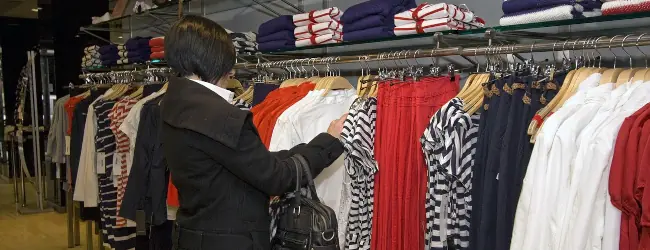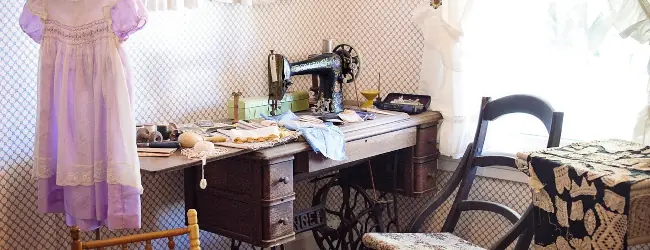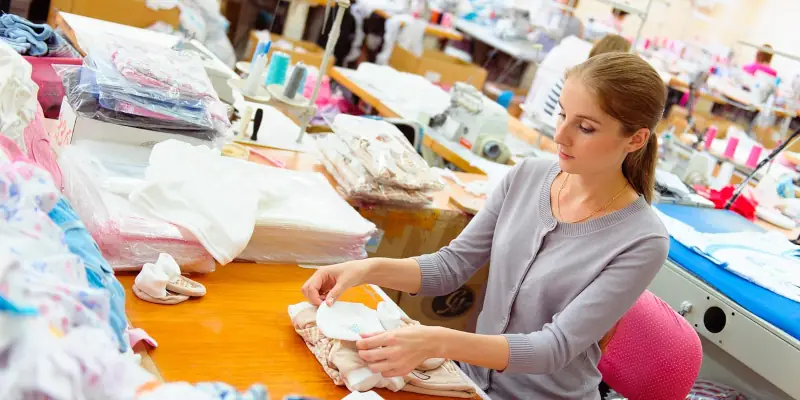After I began selling my bags at a souvenir shop, I confirmed that they could be sold. More than half of the consigned bags have already been sold. Although I doubted whether my sewing products would sell at first, the result cleared the unknown for me.
That allowed me to move on to creating my production strategy. Let’s talk about it.
How to create a product lineup
Sometimes, we want to decide on our product lineup when we try to build our businesses.
Narrowing down the product lineup makes it easier for both our customers and ourselves. For customers, it makes it easier to understand our product’s value and choose. For ourselves, we can create more products in a shorter time. Standardizing the production process simplifies manufacturing.
In my case, I understood that my remodeled bags sell steadily in the market, as said at the top of this article. In addition, I finally mastered the basics of sewing remodeled bags.

That led me to tackle the next challenge. I had a problem with taking a long time to make a single bag. Spending one or two weeks to sew one bag is unrealistic. Even in remodeling, I realized I had to standardize the size, sewing methods, patterns, and materials to improve production efficiency.
Standardizing the product has pros and cons. It makes it easier to create one product, but modifying the creation method is troublesome. We need to decide carefully, or we will struggle with corrections later. It includes the balance of our products.
That is why we want to decide our product lineup efficiently.
One solution is to consider two axes: price range and variation. We can start with three main products. That might help us decide the product lineup. Today, I will explain it with my example.
Price range, variation, and limiting three products
We can decide the product lineup based on the following perspectives:
- Price range: Samples that we offer almost for free, affordable entry-level models, and expensive high-spec models
- Product variation: Different kinds of products according to purpose
It would be effective to balance and produce 3 to 6 core products based on those perspectives.

At the beginning, three products may be sufficient. We don’t need so many products from the beginning.
Three is an effective number for creating a strategy. It allows us to balance our resources without mental struggle. Trying to sell just one product is gambling, not strategic. There is no room for feedback. Dividing into just two options stimulates a black-or-white response, such as an all-or-nothing reaction for customers and ourselves. It is still unstable.
That is why limiting to three provides balance and calmness.
My product direction
In my case, I have the following production direction:
- I will focus on remodeled bags for a while. They are fundamentally made from jeans.
- I will make tote bags my main product. They are the simplest, most convenient, and easiest to sell.
- I also want to include small shoulder bags in the product lineup. Since tote bags tend to be large, something small would balance well.
My product lineup
That led me to decide on the following lineup:
- Free samples (not included in the three lineups): free paper bags made from foreign newspapers, or a free paper that explains how we can be happy by applying remodeled bags to our lives
- An affordable entry-level model: a remodeled, small shoulder bag, like my 7th bag (this one).
- Two types of high-end bags: two kinds of remodeled tote bags. They are like my 9th bag (this one) and 10th bag (this one). I am still considering.
I matched the sizes and the price range. It would be easier to understand. Easy to understand makes it easier for customers to choose.

In sewing, fixing the size largely improves production efficiency. If we use the same pattern, we can assemble the parts quickly. That is why I prioritized fixing sizes.
I am currently planning and trying to create the pattern of the small shoulder bag, which will be one of my main products. Although I don’t know if my prediction and strategy work well, thinking strategically is enjoyable.
Conclusion
That was how I decided on my product lineup.
We can consider it based on two axes: price range and variation.
We can start with three main products.
That perspective might help us decide the product lineup with fun.
Thank you for reading this article. I hope to see you in the next one.


